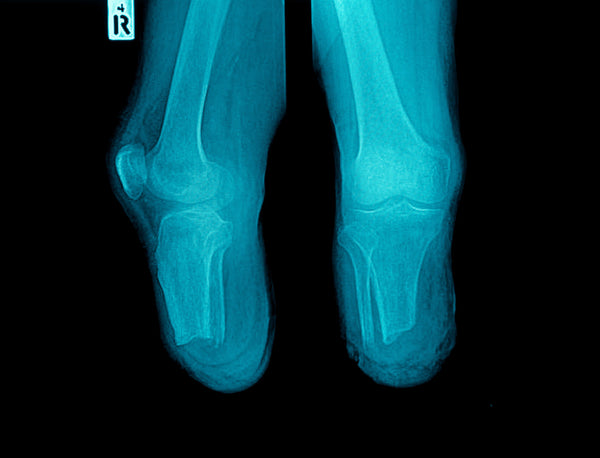Below Knee Amputation: Causes, Surgery and Rehabilition
Below Knee Amputation

There are nearly thirty to forty thousand amputations performed in the US annually and 1.8 million Americans are living with amputations. The most common amputations are the below knee amputations, of which 23% are lower limb amputations. Individuals aged 65 and above are the main recipients of the below knee amputations.
Amputations are a life changing event. The goal of a below knee amputation is to remove the unhealthy and damaged tissues and make the remaining leg more useful and less painful. It is a reconstruction surgery and aims to bring the patient back to normal life. A below knee amputation is usually performed for ankle and foot issues.
After a below knee amputation, the patient gets a prosthetic leg that allows them to walk. Advances in technology have made the recovery and rehabilitation phase much easier and faster for the patients and they can now lead an active and relatively pain-free life following the amputation surgery. The procedure is performed between the knee and the ankle. The amputation provides good results for people with injuries and certain diseases.
Causes and Circumstances in Which a Below Knee Amputation is Needed
A below knee amputation is performed if the patient is suffering from severe and chronic pain, or if the foot or the lower extremity of the patient has been severely injured. While there can be many reasons that a below knee amputation may be required by the patient, listed below are the common reasons, conditions and problems.
- Trauma: A serious and severe injury in the lower limb area caused as a result of a vehicle accident, or burns leading to serious nerve injury or fractures.
- Diabetes: People suffering from diabetes often face a condition called peripheral vascular disease which leads to the narrowing of arteries leading to poor blood circulation. This results in poor circulation to the extremities and insufficient supply of oxygen and nutrients to these parts from the blood stream. As a result, tissue in these parts of the body begin to deteriorate which calls for an amputation to relieve the pain and make the affected parts less painful and more useful. This is one of the leading causes of below knee amputations.
- Cancer: Another reason a below knee amputation may be performed is the presence of untreatable tumors in muscles or bones in the lower limb area of the body.
- Infections: Removal of the lower limb may be required if there are untreatable infections in the lower limb area.
- Congenital Limb Deficiency: This is a condition when the limb fails to develop or form completely. It is a common reason for a below knee amputation among small children.
- Complex Regional Pain Syndrome: This is a condition with chronic pain in the limbs caused as a result of a trauma or an injury to the limb. CRPS is also thought to be caused due to damage or malfunction of the central or peripheral nervous system.
A below knee amputation is a serious and a complex surgery that aims to address the issues in the areas below the knees. A decision to carry out an amputation should be made keeping all the factors into account and after thorough discussions between the team of doctors and the patient, as this decision is going to affect the rest of the life of the patient.
Preparing for a Below Knee Amputation Surgery
Improving the quality of life of a patient is the main reason to perform a below knee amputation. The patients need to prepare themselves for the surgery, and a number of things can be done to facilitate the transition of the patient from a painful and dependent life to a hopefully pain free and independent life post-surgery. Here are some things that can help the patient prepare for the life-changing surgery.
What to Expect
It is important to talk to your doctors about what to expect after the surgery and from rehabilitation. Discuss all the important aspects of the surgery and what to expect after it from your orthopedic surgeon, primary care physician, prosthetist, rehabilitation doctor and physical therapist.
You can also discuss the surgery with someone who has undergone a similar operation before. It is better to find out an amputee who is about your age and ask them for tips to go through the rehabilitation phase successfully. Also look for support groups to get emotional and psychological help. While you are at it, also consider the changes you will have to make in your home. Ask the doctors if you will be confined to a wheelchair and make changes in the home accordingly to make the post-surgery life more comfortable.
Stay Healthy
Since you will be using about 25 times more energy for walking post a below knee amputation, it is important to keep yourself healthy and strong. You should aim to maintain the muscle strength and fitness level that you had before surgery. You will be prescribed some strength exercises by your doctors to keep your muscles strong. Some amputees learn to walk using a knee scooter, crutches and walker. It will take some time to learn how to balance yourself, but you will get used to it with practice.
Who is the Below Knee Amputation Surgery Right for?
People suffering from a traumatic injury or severe pain in the lower leg can opt for a below knee amputation, however, there are many who do not qualify for the surgery. Here are some conditions when the patient might not be a suitable candidate for a knee amputation surgery.
If you do not have proper blood circulation in your body, a proper evaluation before the surgery will be needed as the natural healing process of the body requires a good blood flow.
Having knowledge about the exact location of the tissue is very important if the below knee amputation is conducted because of a tumor or infection. If they are found above the knee as well, you might need a higher level of amputation than just the below knee amputation.
It is important for the below knee amputees to have sufficient skin and muscles to heal the wound. Muscle loss and scar tissues can affect the healing process
The Procedure
A below knee amputation lasts between two to three hours. After the patient is put to sleep by an anesthesiologist, an incision is made on the place of the amputation and calf muscles and skin are cut away leaving a flap to later cover the residual bone. This is the most common procedure of doing the surgery. The patient’s stay in the hospital ranges from one night to two weeks depending on the condition of the wound and the speed of recovery. Once the patient is able to move using a walker, scooter or crutches, they are released from the hospital.
Complications
- Atrophy: Losing muscle strength because of not using the affected limb.
- Phantom Limb Pain: A shooting pain felt in the area of the amputated limb.
- Contracture: Tightness of muscles and joints due to lack of movement.
- Bone Spur Overgrowth: Formation of an undesired bone at the base of the residual limb affecting the ability to wear prosthetics.
The Recovery and Rehabilitation Post Surgery
The speed of recovery for each patient is different and depends on their overall health and age. In the first few days of the surgery, the patient will be made to do some stretching and some motion exercises. The patient will also be assisted in learning some basic actions like rolling in bed, sitting on the side of the bed and moving to a chair safely. It is important to be very careful in the recovery phase as even a small bump can lead to opening of the incision which will delay the recovery process and also give birth to the need of performing additional surgeries.
It is important to monitor your physical, emotional and psychological well-being after the surgery. You will have to make some major changes to your lifestyle, but you will gain independence in some time and can lead a routine life again. Maintaining muscle strength is very important for speedy recovery and rehabilitation after the below knee amputation surgery has been performed. While prosthetics are very important and necessary for normal functioning after the surgery, you cannot wear these all the time. For example, when you are relaxing at the home at the end of the day, taking showers, or doing something that might damage or stain the prosthetic limb. Here are some solutions to solve the issue of wearing prosthetics all the time.
- Wheel Chair: Having a wheelchair at home is a great idea if you are an amputee especially when you are living in a large single-story home.
- Knee Scooter: This is one the most convenient and comfortable ways of resting your bent residual limb and carry on with the daily activities of life without wearing prosthetics. It is simple to use and offers comfort as you will be bending your residual limb on a flat surface which allows mobility all over the house.
Below knee amputation is a life-changing surgery and the outcomes are more positive than negative. A below knee amputation results in a pain free and more useful life than before. You can also live a completely independent life post-surgery, thanks to prosthetics and devices like the knee scooter which help the amputees fight pain, recover from injuries and lead a full and active life. See our full line of KneeRover products here.
This is for informational purposes only, please remember to consult your doctor.
Looking for a knee scooter or knee walker? Whether you are looking for a knee scooter rental or a knee scooter for sale, we have the best option for you. Purchasing a knee scooter can be more cost effective than renting a knee scooter. Can't find a knee scooter near me? We offer free next day shipping!

